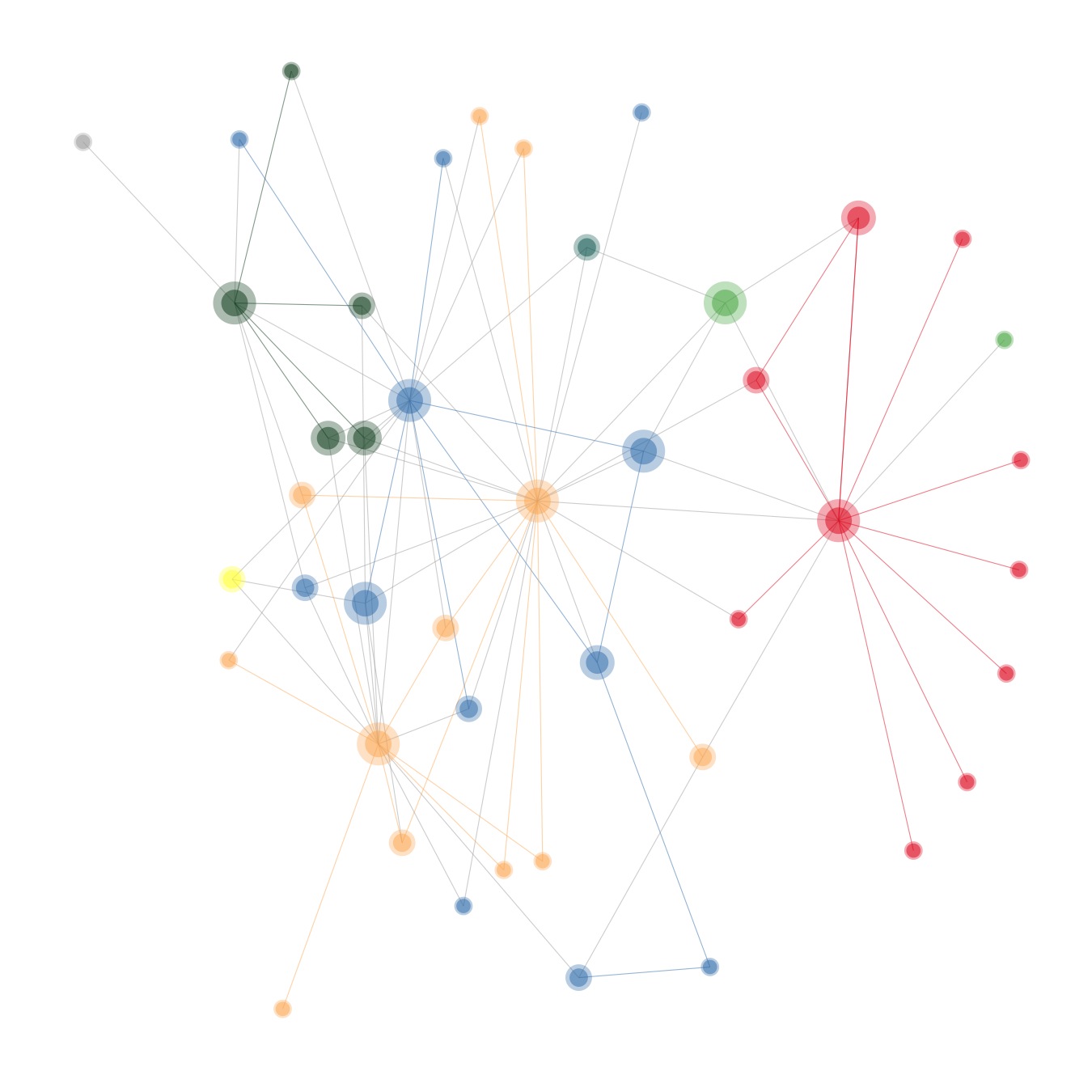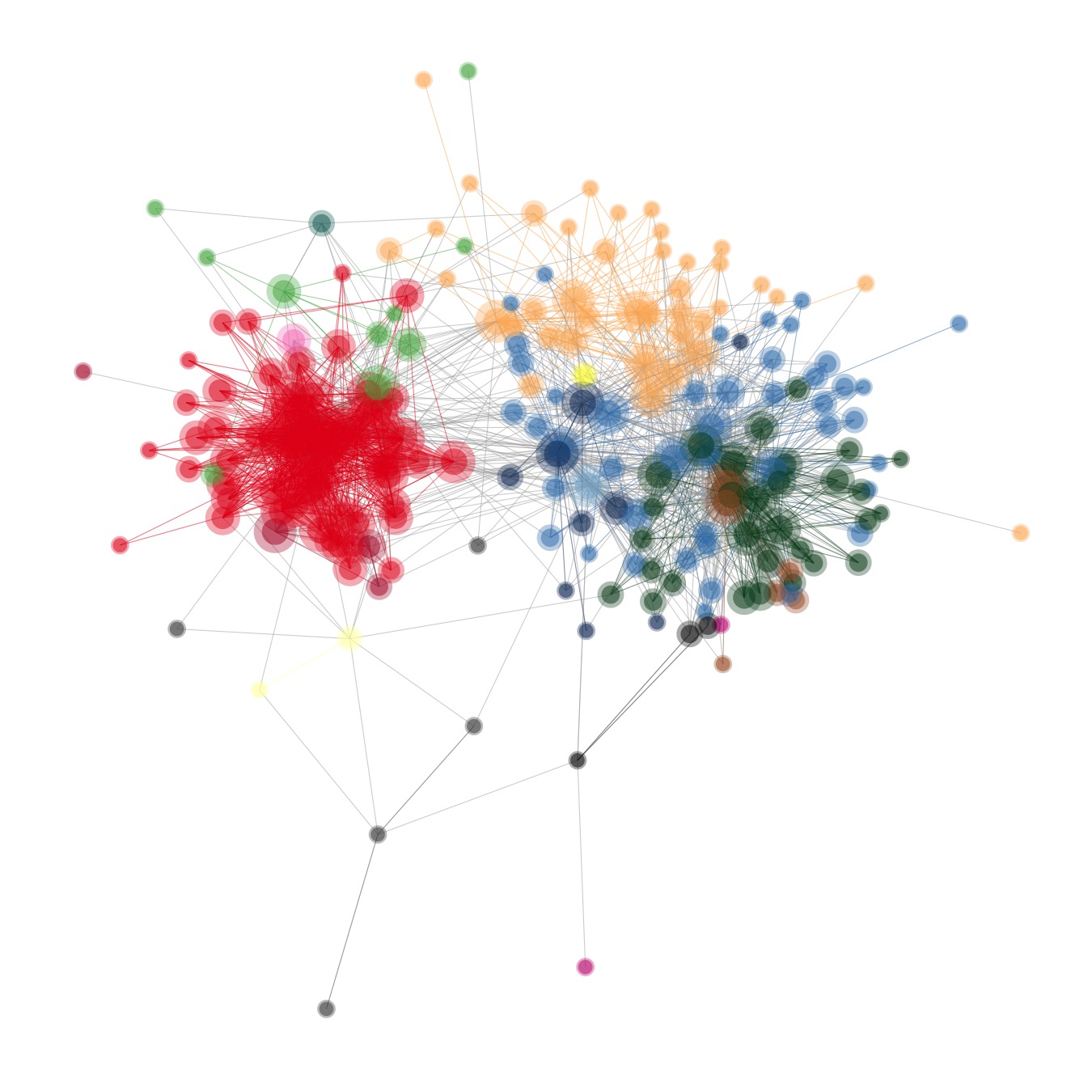 L. 46 (1999–2003)
L. 46 (1999–2003) L. 47 (2003–2007)
L. 47 (2003–2007)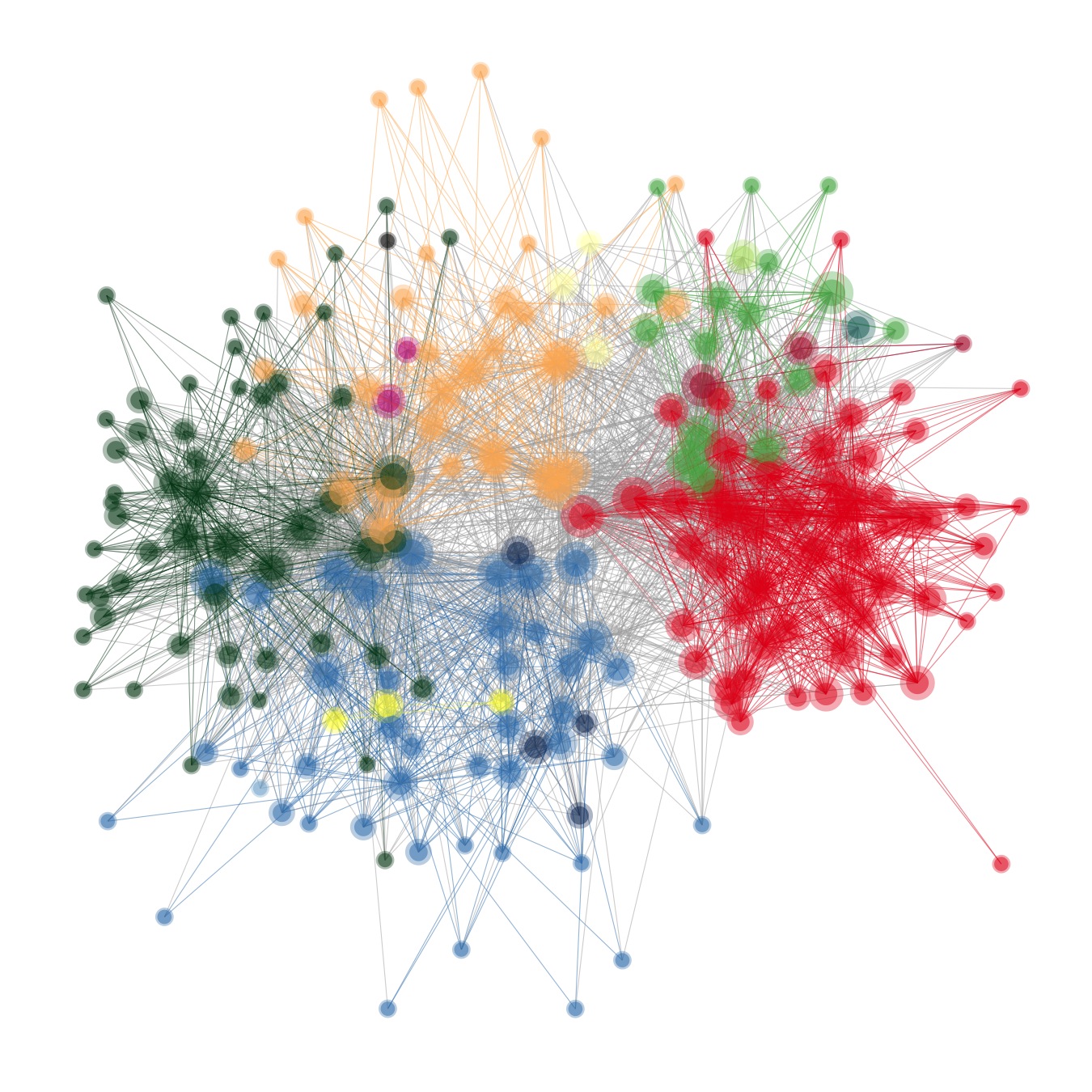 L. 48 (2007–2011)
L. 48 (2007–2011)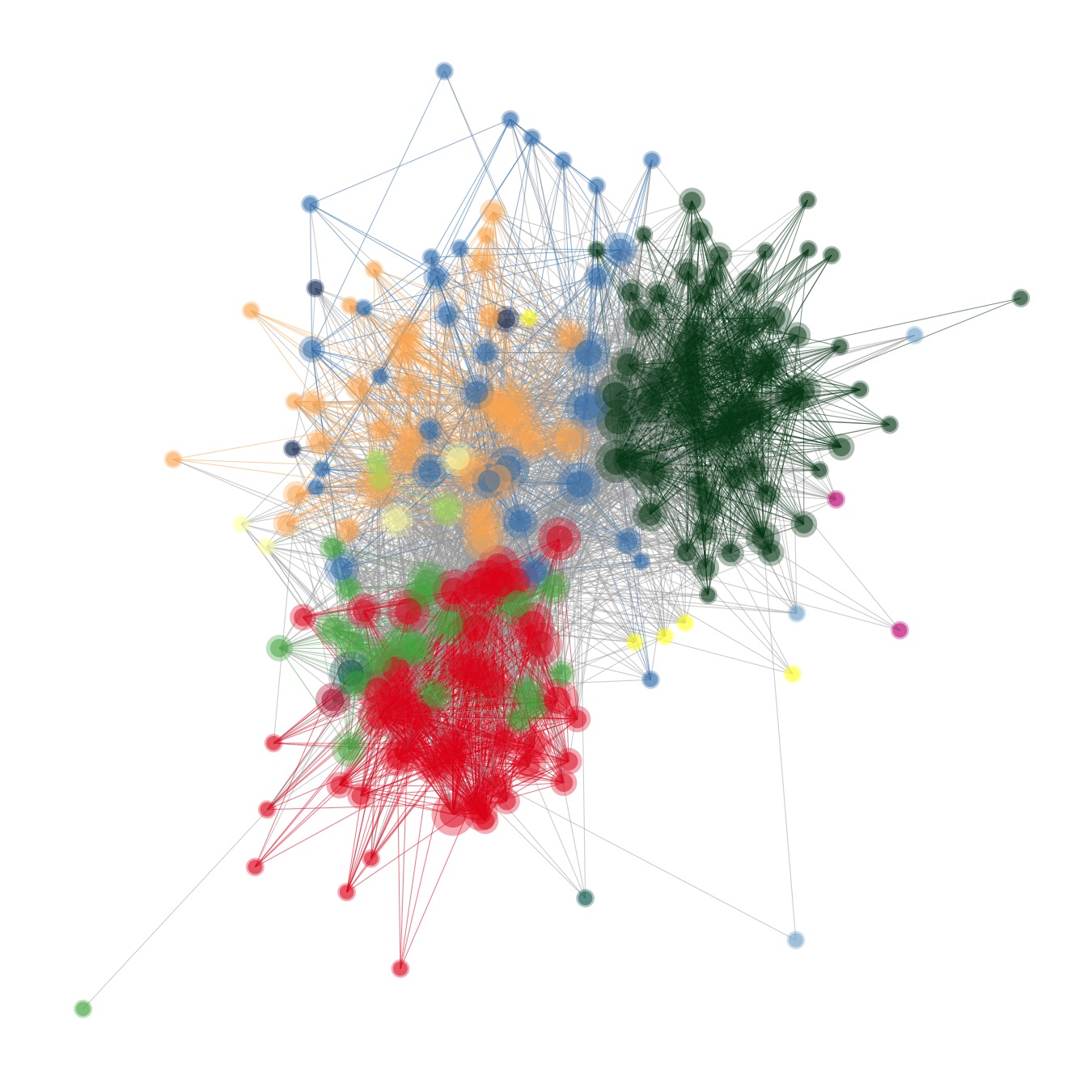 L. 49 (2011–2015)
L. 49 (2011–2015)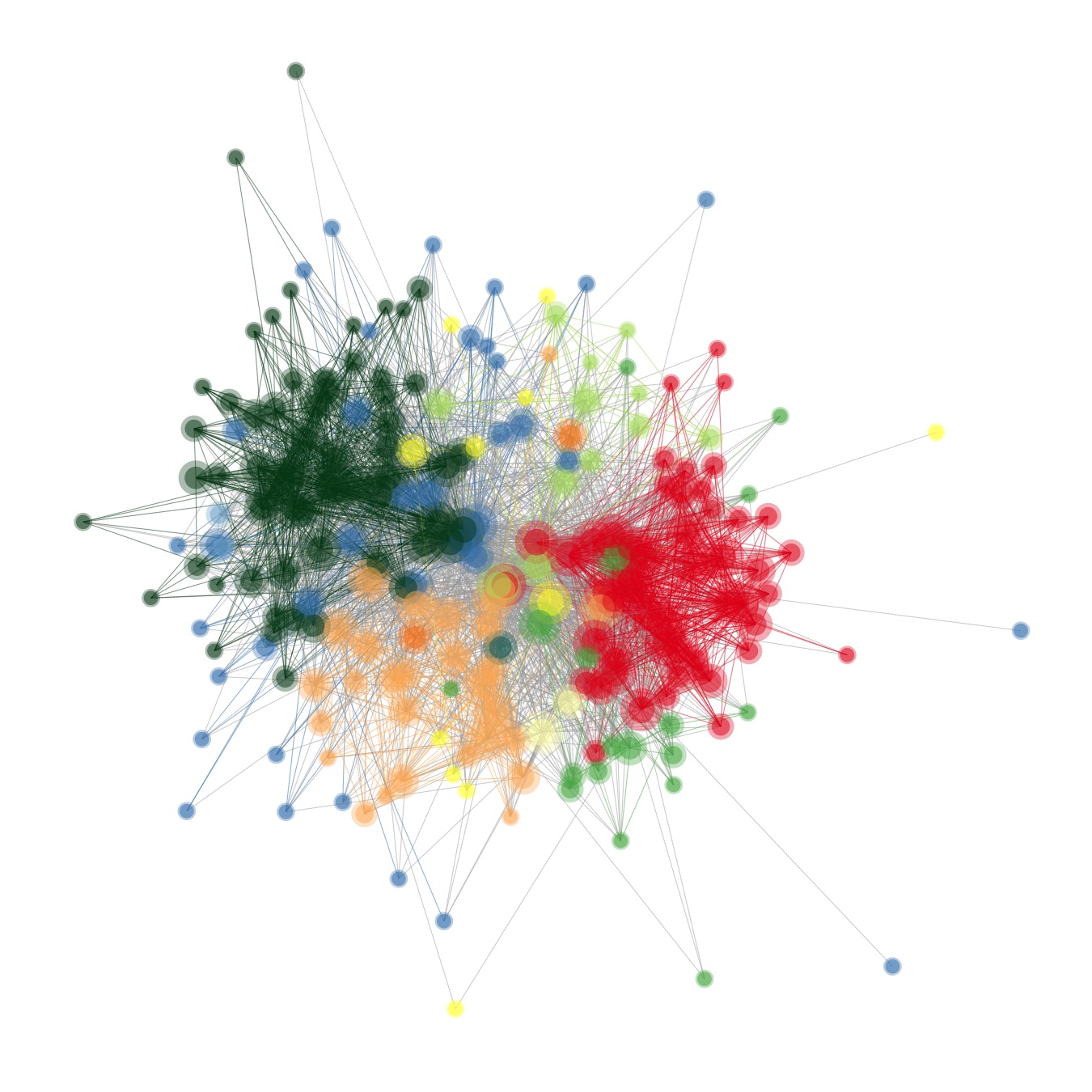
All networks are directed graphs drawn with the Fruchterman-Reingold force-directed algorithm. The ties connect the first author of each bill to the cosponsors of that bill. The nodes are sized by unweighted total degree. When two nodes belong to the same group, any existing tie between them is given the color of that group. There is a guide to party codes and colors at the end of this page.
See the interactive visualization, or view other countries.
L. 45 (1995–1999)
 L. 46 (1999–2003)
L. 46 (1999–2003)
 L. 47 (2003–2007)
L. 47 (2003–2007)
 L. 48 (2007–2011)
L. 48 (2007–2011)
 L. 49 (2011–2015)
L. 49 (2011–2015)

L. 45 (1995–1999)
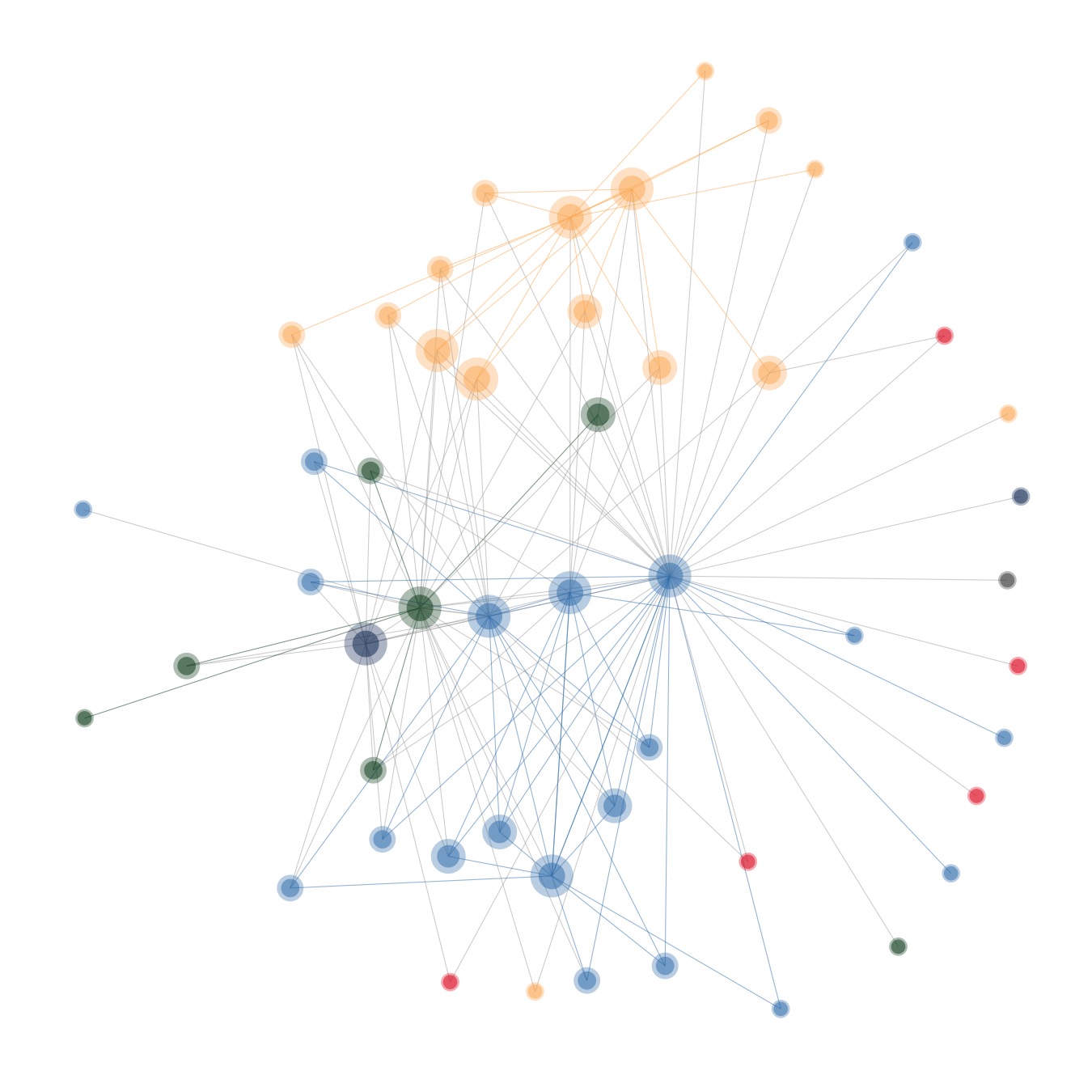 L. 46 (1999–2003)
L. 46 (1999–2003)
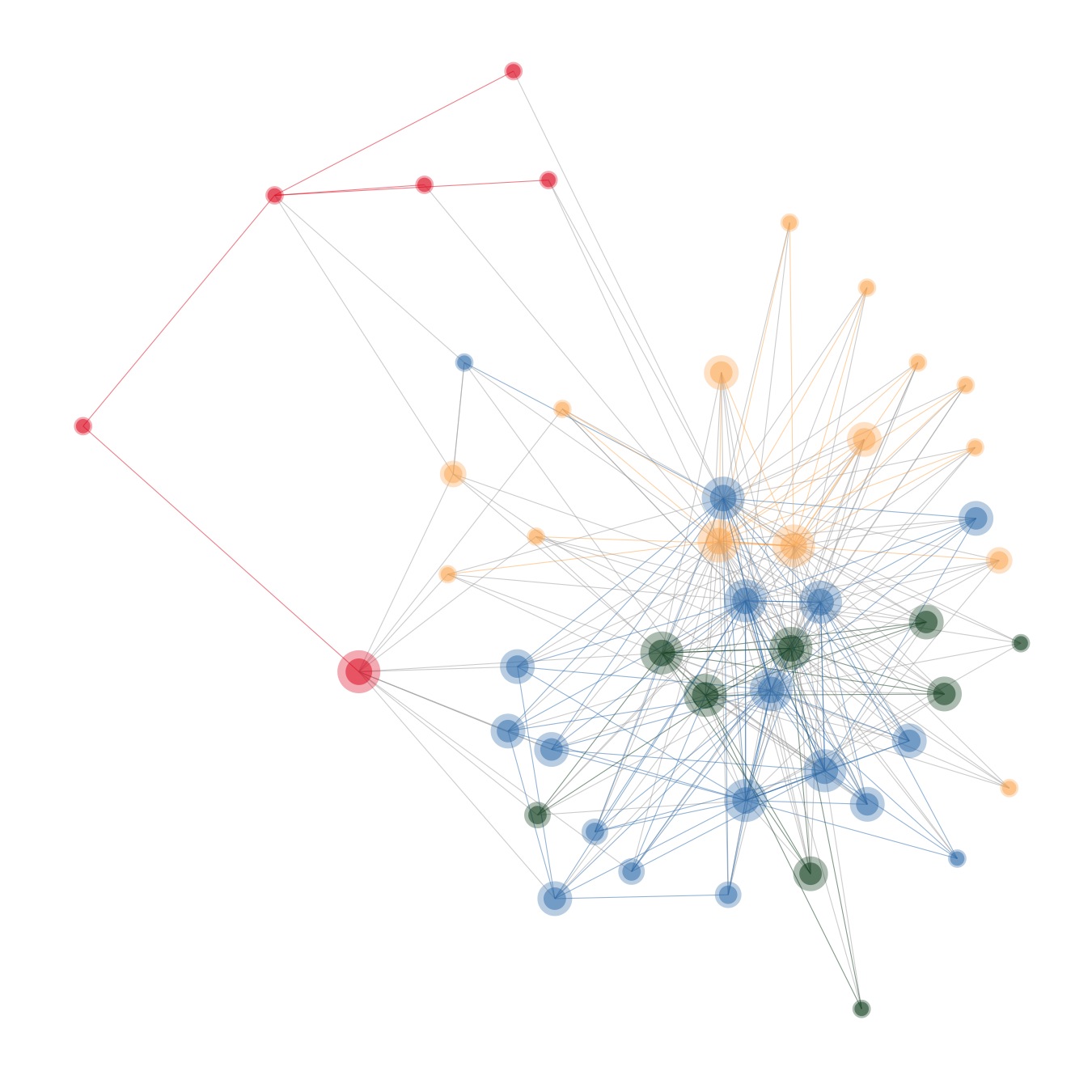 L. 47 (2003–2007)
L. 47 (2003–2007)
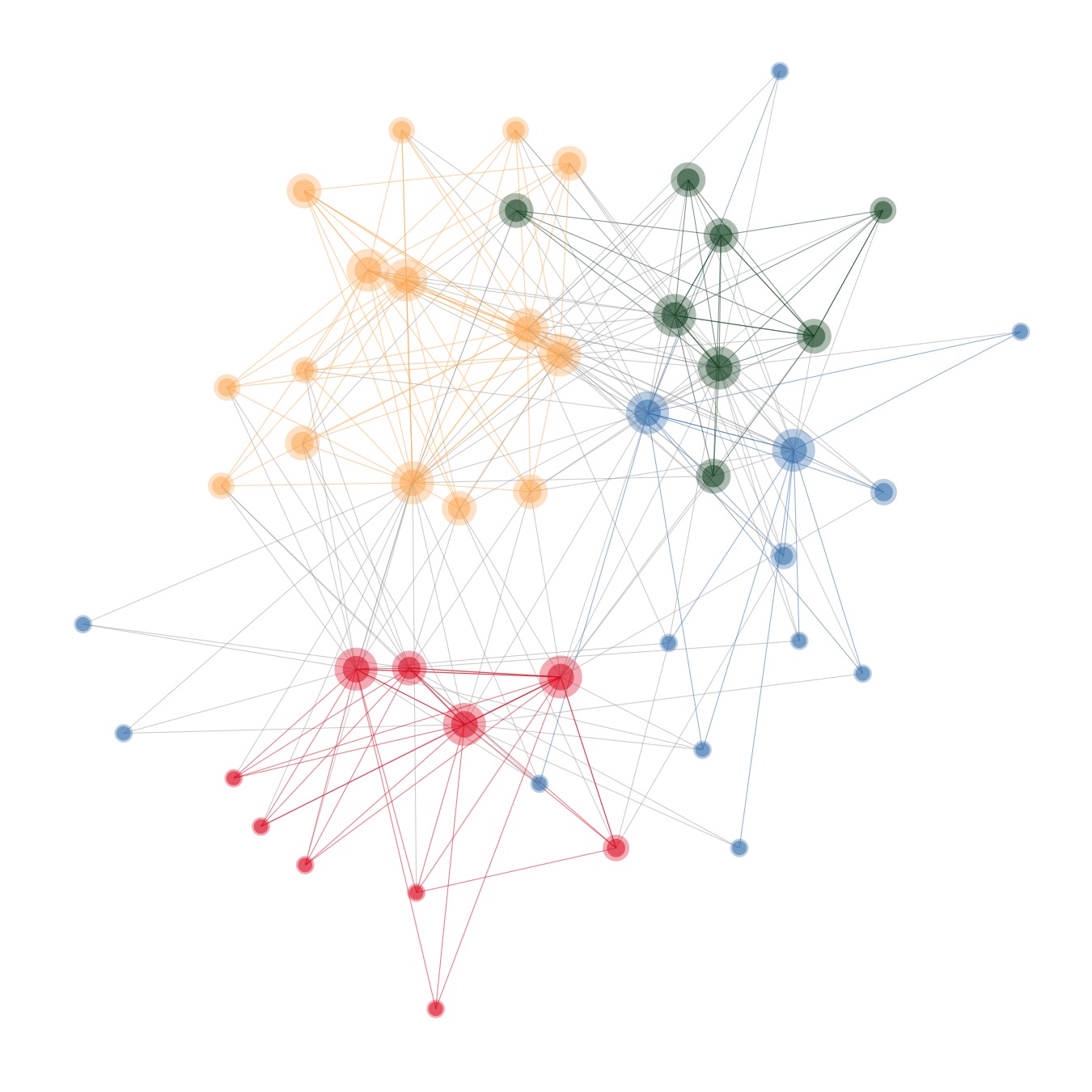 L. 48 (2007–2011)
L. 48 (2007–2011)
 L. 49 (2011–2015)
L. 49 (2011–2015)
